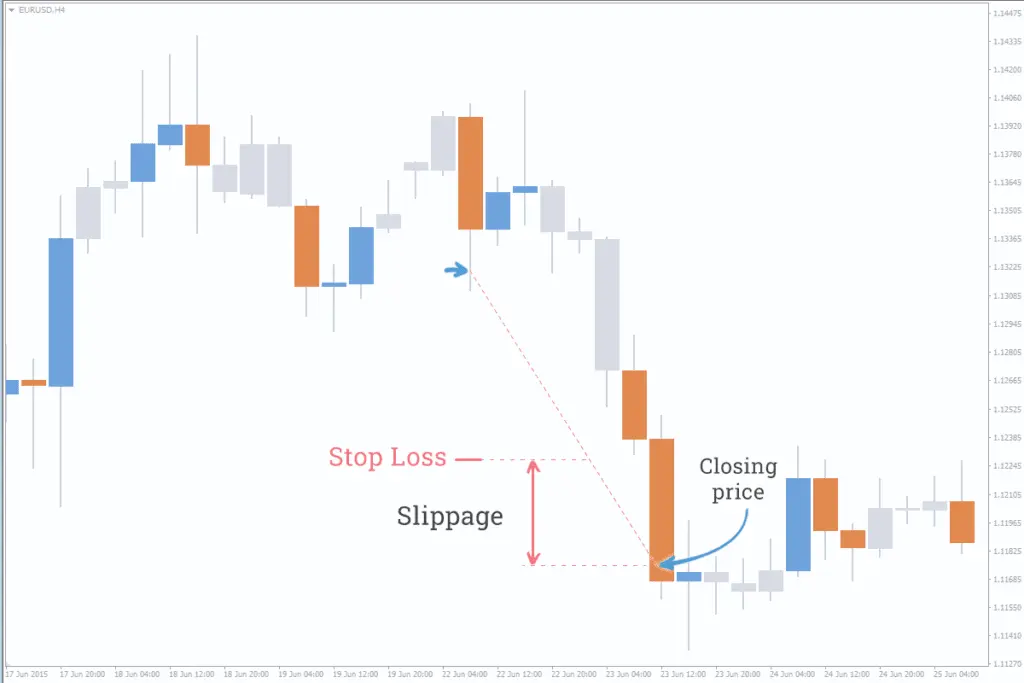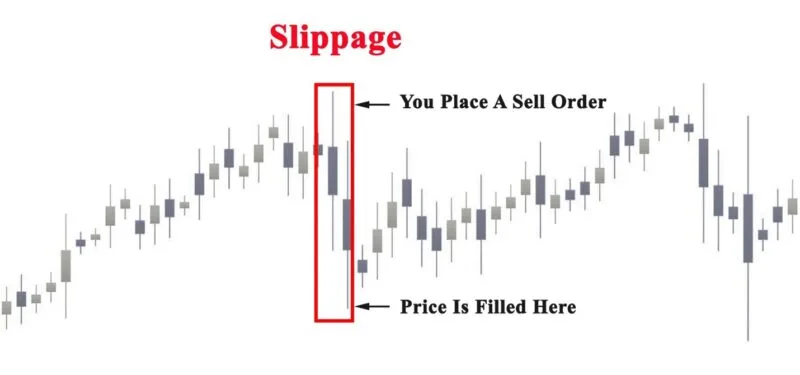Slippage in Forex can be a silent profit killer. It affects new traders and seasoned experts alike, often disrupting carefully planned trades. Slippage in Forex occurs when there’s a difference between the expected price and the actual price of a trade. This discrepancy can occur at any time, but it’s especially prevalent during high volatility and fast-moving markets. Knowing how to minimize slippage in trading can help protect your profit margins. This article breaks down the causes of slippage, how to avoid it, and the top Forex trading strategies for dealing with it.
What is Slippage in Forex?

In Forex trading, slippage happens when the execution price of a trade differs from the price expected at the moment of placing the order. Let’s say you attempt to buy a currency pair at a specific price. By the time your order is executed, market conditions may have changed, and the actual price could be higher or lower. This difference is slippage.
Slippage in Forex may sound insignificant, but it can have a lasting impact on profits. Sometimes, slippage works in your favor, giving you a better price. However, it often results in losses. Especially when prices fluctuate rapidly, slippage can turn a profitable trade into a costly mistake.
Why Does Slippage in Forex Happen?
The Forex market is highly volatile. Price changes can happen in an instant, driven by global economic events or significant market news. When these events occur, the rapid movement of currency values makes it challenging to execute orders at the intended price. Order execution in Forex is another factor in slippage. Execution speed varies across brokers and trading platforms. Slow order execution increases the chance of slippage, particularly during peak trading periods.
For instance, if a major economic announcement is due, many traders place orders at once, causing liquidity to fluctuate and prices to shift. Consequently, orders might execute at unexpected prices. This is why understanding the relationship between order execution in Forex and market volatility is critical.
Strategies to Minimize Slippage in Trading
To minimize slippage in trading, use specific strategies that keep you one step ahead of market fluctuations. Here are some of the most effective techniques:
- Use Limit Orders for Better Control
- Limit orders allow you to set the maximum or minimum price you’re willing to pay or receive. Unlike market orders, which execute at the best available price, limit orders only execute if the market meets your price. For example, if you’re looking to buy a currency pair at 1.1500, a limit order ensures you don’t pay more than this. It’s an essential tool in reducing the impact of slippage.
- Trade During High-Liquidity Hours
- The Forex market’s liquidity fluctuates throughout the day. During the overlap of the London and New York sessions, liquidity is at its peak. High liquidity generally means tighter spreads, faster order execution, and reduced slippage. Trading during these hours can help you avoid unexpected costs.

3. Avoid Major News Events
News events can shake the market and drive price movements unpredictably. To minimize slippage in trading, it’s wise to avoid entering trades around scheduled economic announcements. Checking the economic calendar and planning trades outside of high-volatility periods can protect you from unwanted surprises.
The Role of Order Execution in Forex
Order execution in Forex directly impacts slippage. Different brokers have different execution speeds, and these speeds can affect the trade price. For instance, a broker with fast execution speeds might complete a trade close to the expected price. In contrast, a slower broker may take a few seconds longer, increasing the chance of price variation. For traders, this difference in speed could mean the difference between a profitable trade and a loss.
Some brokers offer instant execution, while others provide market execution. Instant execution allows trades to happen at the specified price or not at all. Market execution may fill the order at the best available price, even if it differs from the expected price. Choosing a broker with reliable and fast order execution in Forex can reduce the slippage risk.
Utilizing Slippage Protection Tools
Many Forex brokers offer slippage protection tools, such as guaranteed stop-loss orders. With a guaranteed stop-loss, your trade exits at the pre-specified price, even if the market gaps. For instance, if you set a stop-loss at 1.2000, the broker guarantees that your trade will close at this price, even if the market price quickly moves past it. This can be a powerful way to limit losses.
Some brokers also offer slippage tolerance settings. With slippage tolerance, you can define the maximum deviation you’re willing to accept for an order. Setting a slippage tolerance of, say, two pips means your trade will only execute if the price falls within this range. This is a helpful option in volatile markets.
The Importance of Choosing the Right Broker
Choosing the right broker is vital for minimizing slippage in trading. Not all brokers handle slippage the same way, and some have systems designed to protect traders from it. Look for brokers with a reputation for fast order execution, high liquidity access, and minimal slippage. Reading broker reviews and understanding their execution policies can provide insights into their practices.
Additionally, brokers with strong infrastructure can handle orders faster, reducing the likelihood of slippage. For example, brokers with direct market access or electronic communication networks often experience less slippage, as they connect you directly to liquidity providers.
Slippage in Forex and Market Volatility
Forex market volatility is a significant contributor to slippage. During periods of high volatility, price fluctuations happen in seconds, making it challenging for orders to execute at the desired price. A sudden change in price can shift the trade outcome in an instant.
Imagine trading a currency pair during a major economic announcement. Prices can move hundreds of pips within seconds, and this rapid change increases the risk of slippage. To combat this, keep an eye on market conditions and avoid trading in high-volatility periods. This can reduce exposure to price discrepancies.
The Role of Forex Trading Strategies in Managing Slippage
Forex trading strategies can also help traders manage and reduce slippage. By using specific techniques, you can maintain more control over your trades and minimize unexpected costs.
- Scalping
- Scalping involves making quick trades to capture small price movements. Scalpers often trade during peak liquidity periods to minimize slippage. Although scalping requires quick decisions and precision, it can be effective in stable market conditions.
- Swing Trading
- Swing trading involves holding trades for several days to capture larger price movements. Swing traders tend to avoid periods of high volatility and focus on less turbulent times. By choosing strategic entry points, swing traders can reduce slippage risk.
- Trend Following
- Trend-following traders look for strong price trends and trade in the direction of these trends. This strategy relies on identifying clear trends, allowing traders to avoid highly volatile conditions and slippage.
Staying Informed: The Economic Calendar and News
Staying informed about upcoming news events is a simple yet powerful way to manage slippage in Forex. The economic calendar lists important events, like central bank announcements and economic reports. By checking the calendar before trading, you can avoid periods of anticipated volatility.
For example, non-farm payroll data, which affects the U.S. dollar, typically causes high volatility in the Forex market. Knowing the date and time of these releases helps traders avoid these periods, protecting them from unexpected price changes and slippage.
Conclusion
Slippage in Forex may seem like a small detail, but over time, it can significantly impact your trading results. By actively managing order execution, selecting high-liquidity trading times, and using strategic order types, you can minimize the chances of costly surprises. Slippage protection tools, reliable brokers, and informed timing all help to keep slippage under control, preserving more of your hard-earned gains.
Successful Forex trading isn’t just about picking the right trades—it’s also about controlling the factors that affect your outcomes. By understanding and reducing slippage, you put yourself in a stronger position to capture consistent profits, even in volatile markets. With these strategies in place, you’ll be better equipped to navigate the Forex market with confidence and control.
Click here to read our latest article Forex Trading and Poker: Fascinating Parallels for Winning Big
This post is originally published on EDGE-FOREX.


